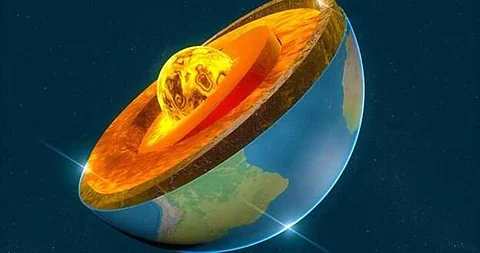
- Home
- Live Blog
- Breaking News
- Top Headlines
- Cities
- NE News
- Sentinel Media
- Sports
- Education
- Jobs

NEW YORK: Where did our planet’s magnetic field come from? According to new research, Earth’s mantle, not its core, may have generated the planet’s early magnetic field.
The Earth’s mantle is made of silicate material that is normally a very poor electrical conductor. Therefore, even if the lowermost mantle were liquid for billions of years, rapid fluid motions inside it wouldn’t produce large electrical currents needed for magnetic field generation, similar to how Earth’s dynamo currently works in the core.
In a study appearing in the journal Earth and Planetary Science Letters, Scripps Oceanography researchers Dave Stegman, Leah Ziegler and Nicolas Blanc provide new estimates for the thermodynamics of the magnetic field generation within the liquid portion of the early Earth’s mantle. Stegman’s team asserted the liquid silicate might actually be more electrically conductive than what was generally believed.
“Currently we have no grand unifying theory for how Earth has evolved thermally,” Stegman said. “We don’t have this conceptual framework for understanding the planet’s evolution. This is one viable hypothesis.”
New research lends credence to an unorthodox retelling of the story of early Earth first proposed by a geophysicist at Scripps Institution of Oceanography at the University of California San Diego.
It has been a bedrock tenet of geophysics that Earth’s liquid outer core has always been the source of the dynamo that generates its magnetic field.
In another paper, Arizona State geophysicist Joseph O’Rourke applied Stegman’s concept to consider whether it’s possible that Venus might have at one point generated a magnetic field within a molten mantle. (IANS)